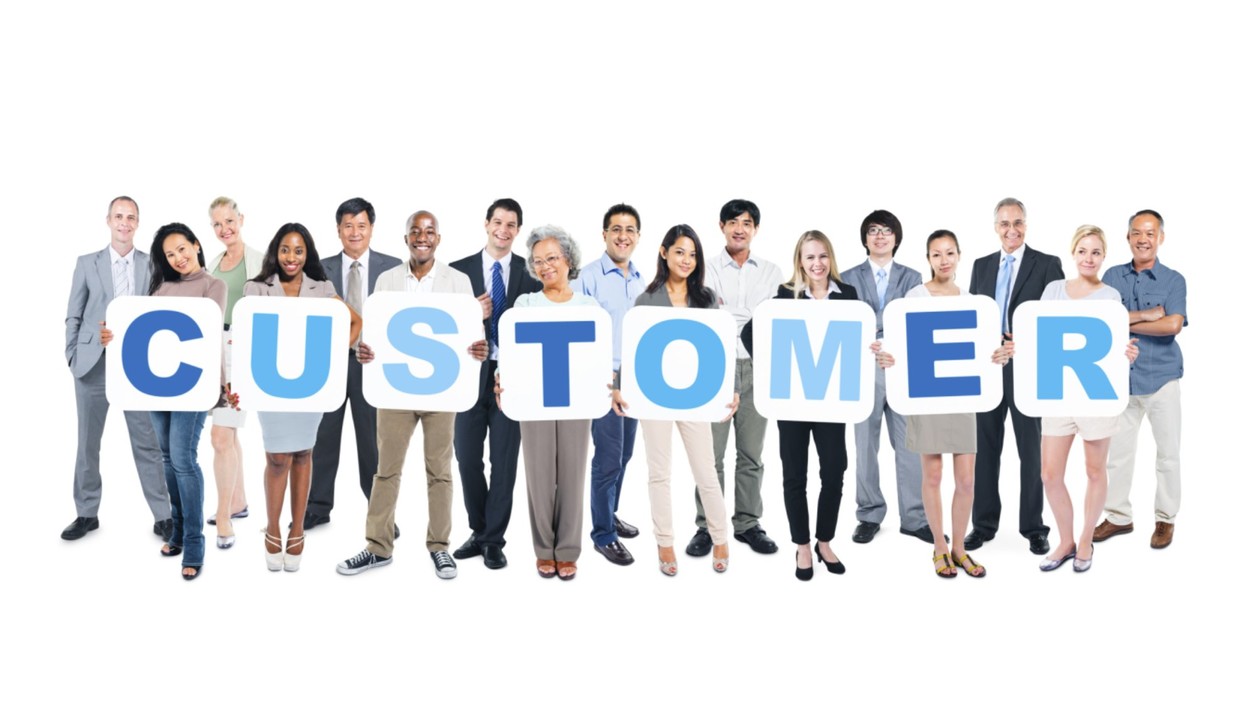
Who is a customer?
Wikipedia defines a customer (sometimes known as a client, buyer, or purchaser) as the recipient of a good, service, product or an idea - obtained from a seller, vendor or supplier via a financial transaction or exchange for money or some other valuable consideration.
Most people tend to use the word customer and consumer almost interchangeably. However a customer and a consumer are different. A customer is a person or company who purchases goods and services. A customer becomes a consumer when he or she uses the goods or services.
There are many possible customers; buyers, users, influencers, administrators, and distributors. So who is the customer? When you look them through a task lens, we see that they are all trying to get a job done, but not the same job. Of course, companies want to help any and all potential customers get their unique jobs done better, earning their loyalty. The key to success, however, is knowing who the primary customer is and the hierarchy to follow to optimize value creation and profits.
Classification of Customers
Customers can be classified based on the relationship as follows:
- B2C which stands for Business-to-Customer (B2C) for example when you buy fruits from the fruit shop,
- Business-to-Business (B2B) where the fruit shop owner uses the services of an auditing firm to examine his accounts,
- C2B which is Customer-to-Business (C2B) for example where an individual sells his sweets to be sold by the sweet store keeper C2C
- Customer-to-Customer (C2C) where customers sell goods to each other for example eBay, where consumers sell goods to other consumers.
- Government to Citizen (G2C) where the Government is selling products or providing services to the citizens of the country
Customer Groups
Another way to look at a customer is a person or organization that will benefit from the goods and services offered by an organization. As this definition suggests, a customer is not necessarily someone who is currently purchasing from an organization. Customers can be grouped into the following three groups..
Existing Customers
Consists of customers who have purchased an organization’s goods or services, typically within a designated period of time. Existing Customers are by far the most important of the three customer groups since they have a current relationship with an organization and, consequently, they give an organization a reason to remain in contact with them. Additionally, Existing Customers also represent the best market for future sales, especially if they are satisfied with the relationship they presently have with the organization.
Former Customers
Consists of customers those who have formerly had relations with the organization typically through a previous purchase. However, the organization no longer feels the customer is an Existing Customer either because they have not purchased from the organization within a certain time frame or through other indications for example a Former Customer just purchased a similar product/service from the organizations' competitor
Potential Customers
Consists of customers who have yet to purchase but possess what the organization believes are the requirements to eventually become Existing Customers. Typical requirements to become a potential customer include having a need for a product, possessing the financial means to buy, and having the authority to make a buying decision.
Customer Types
Customer can belong to two types
- Internal Customers : An internal customer is a person or team within an organisation to whom they provide products or services. This person or team may work interstate or even overseas for the organization, but they are still an internal customer.
- External Customers : An external customer is an individual or group that an organization provide products and/or services to, that does not work for the same organisation.
A Holistic Customer Centric Approach
For most organizations understanding customers is the key to success while not understanding them is a recipe for failure. It is so important that the constant drive to satisfy customers is not only a concern for those responsible for sales and marketing activities; satisfying customers should be the primary objective of everyone in the entire organization.
A well run organization underpins their focus on the customer and their needs and wants. The marketing orientation occurs as a result of all of the people from within a business from the CEO to the receptionist making the satisfaction of customer needs and wants their whole reason for being. So what is the best way to teach employees on who the customer is... Here are some simple statements for describing customers for any organization...
- The most important person we come into contact with either by telephone, email, web, mobile or in person.
- Not an outsider to our business…a part of it.
- Not someone to argue or match wits with. Nobody ever won an argument with a customer.
- Someone who comes to us with wants and needs. It’s our job to fill those wants and needs.
- Not a cold statistic…a flesh and blood human being with feels and emotions like your own. They deserve to be treated with respect and the most courteous attention we can give.
- Not an interruption of our work but the purpose of it. We are not doing them a favor by serving them…they are doing us a favor by giving us the opportunity to serve them.
- Not dependent on us…we are dependent on them. Remember it’s the customer who signs our paycheck.
- The one whose continued goodwill we must hold on to so that he/she will continue to buy from us which is the key to our success in the future.
- The lifeblood of every business
- Finally Customer is King.
Thanks for sharing!
Founding Partner at Insigniam
6yGreat insight and wisdom from Vish Viswanathan.
Data driven Product Management - global experience in multiple domains
6yAbout time you started publishing and sharing your experiences Vish!
Director - Indian Operations - Aigilx Health
6yGreat definitions and explains subtle differences well.